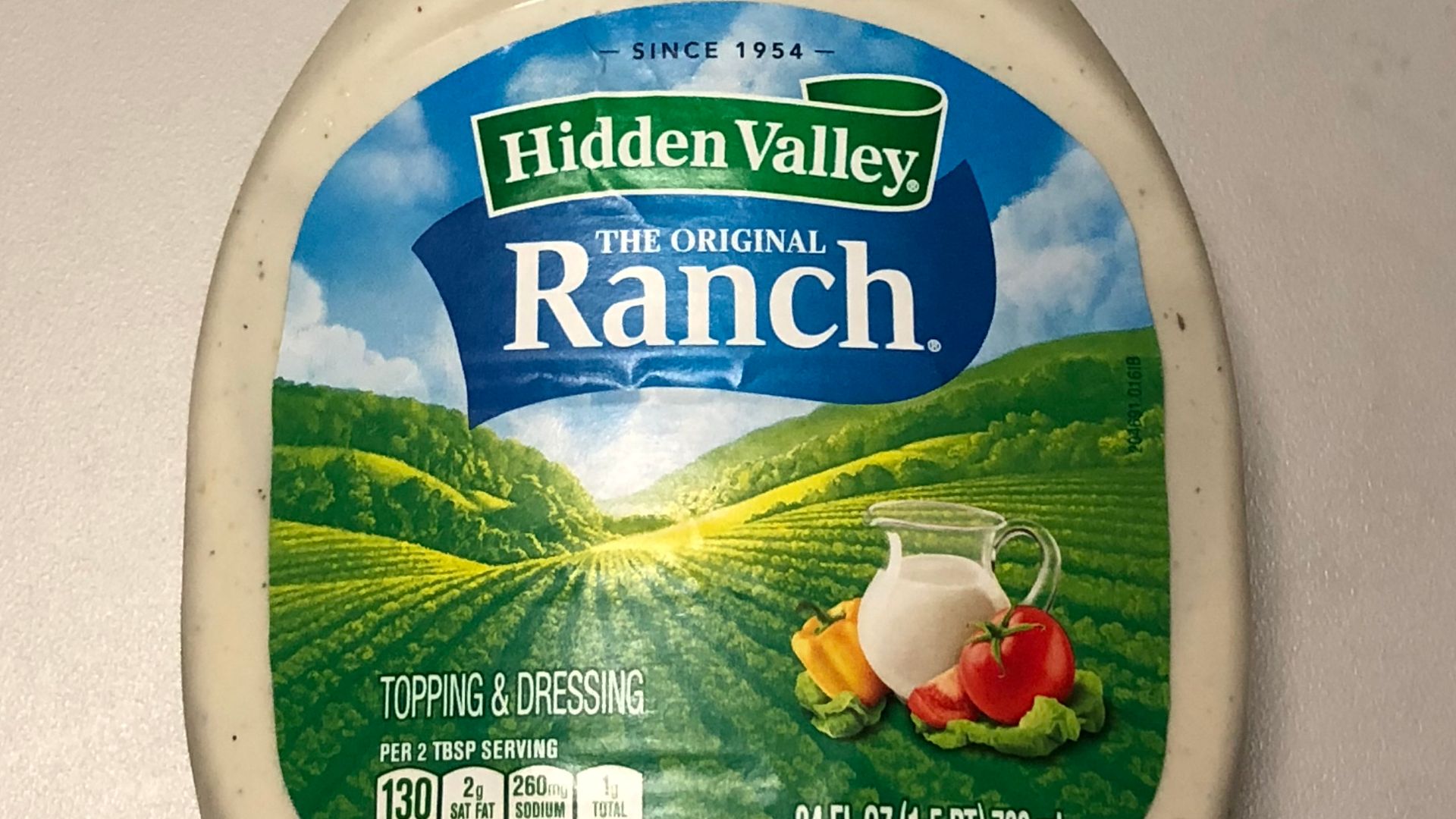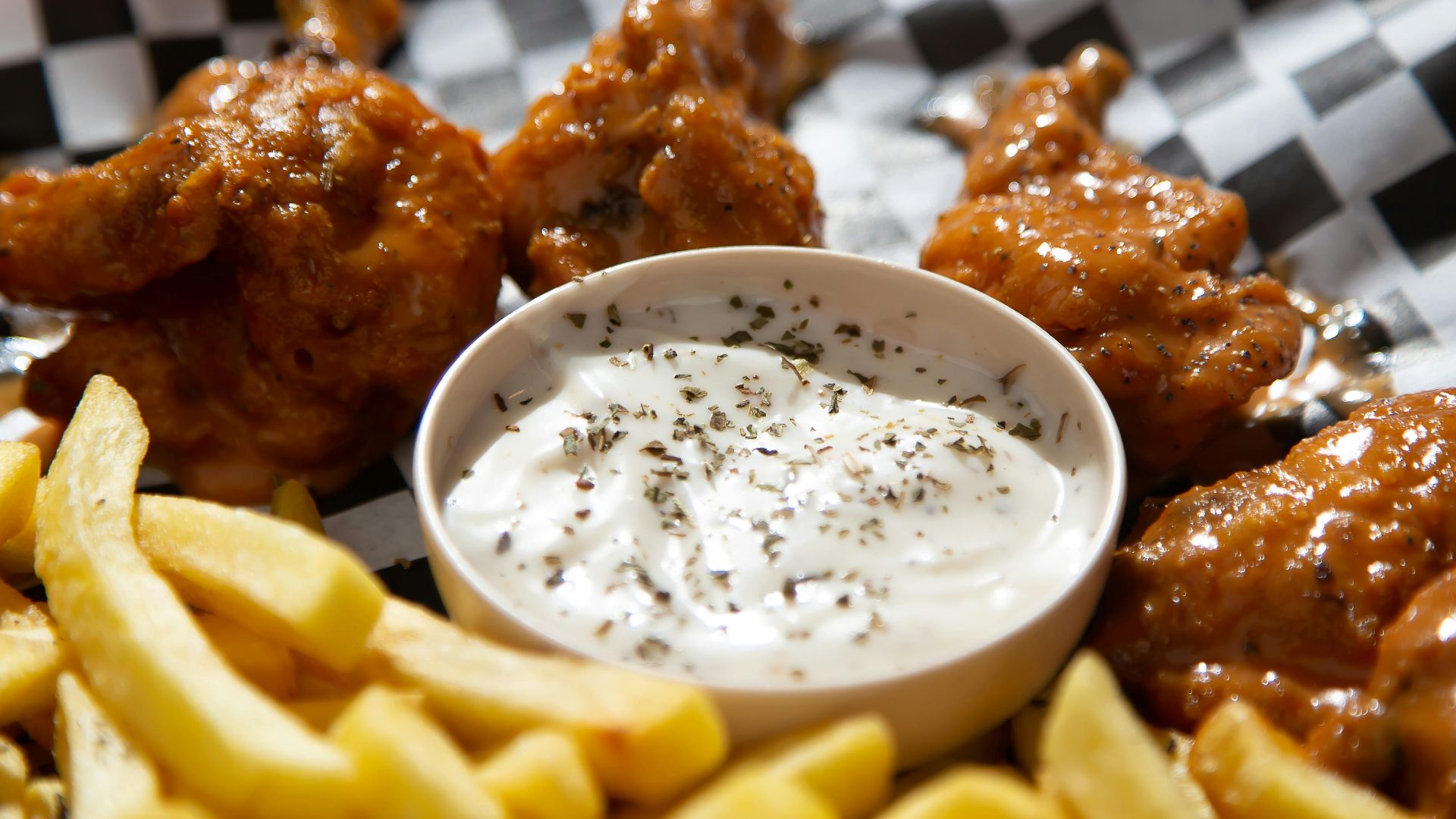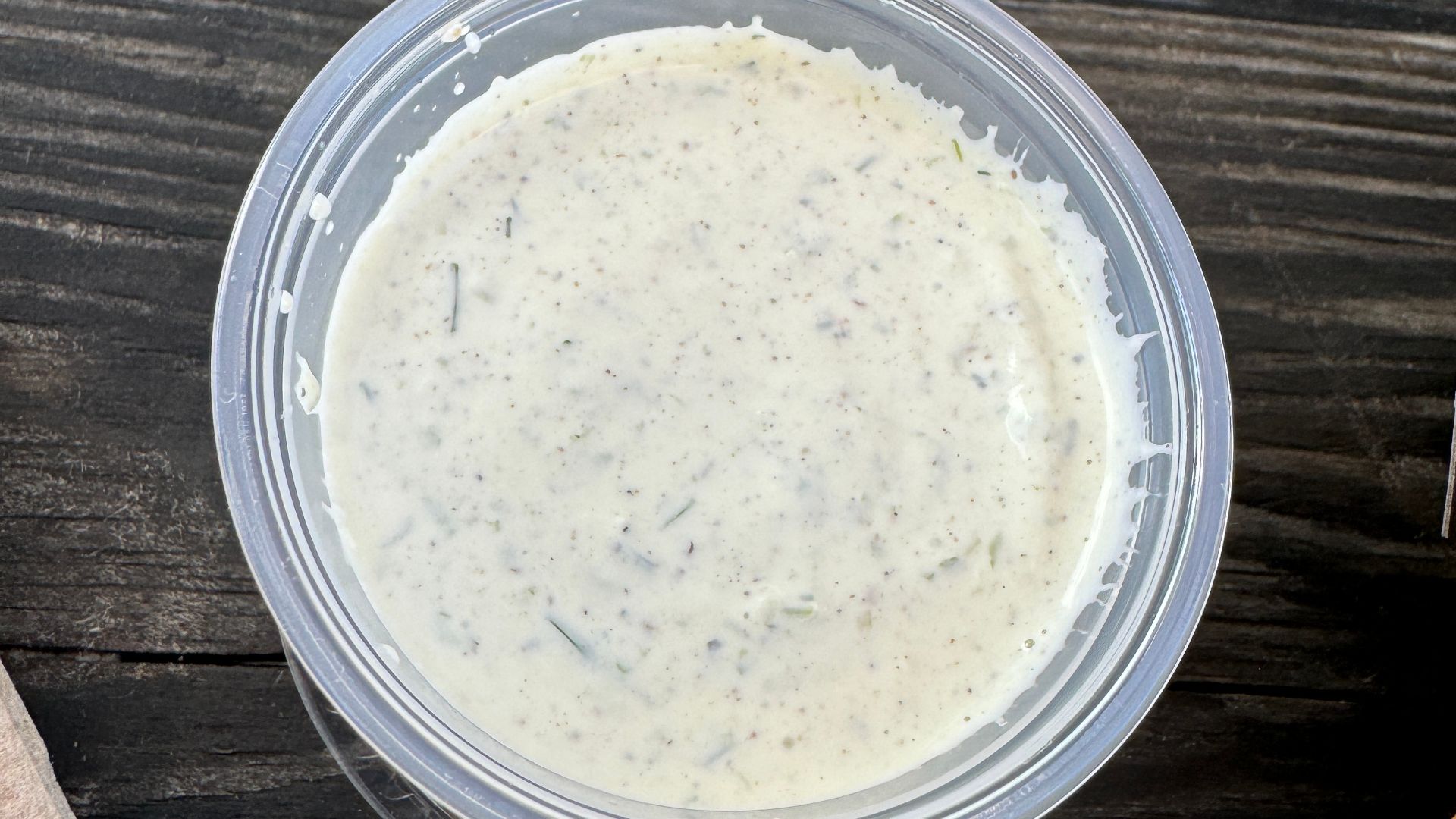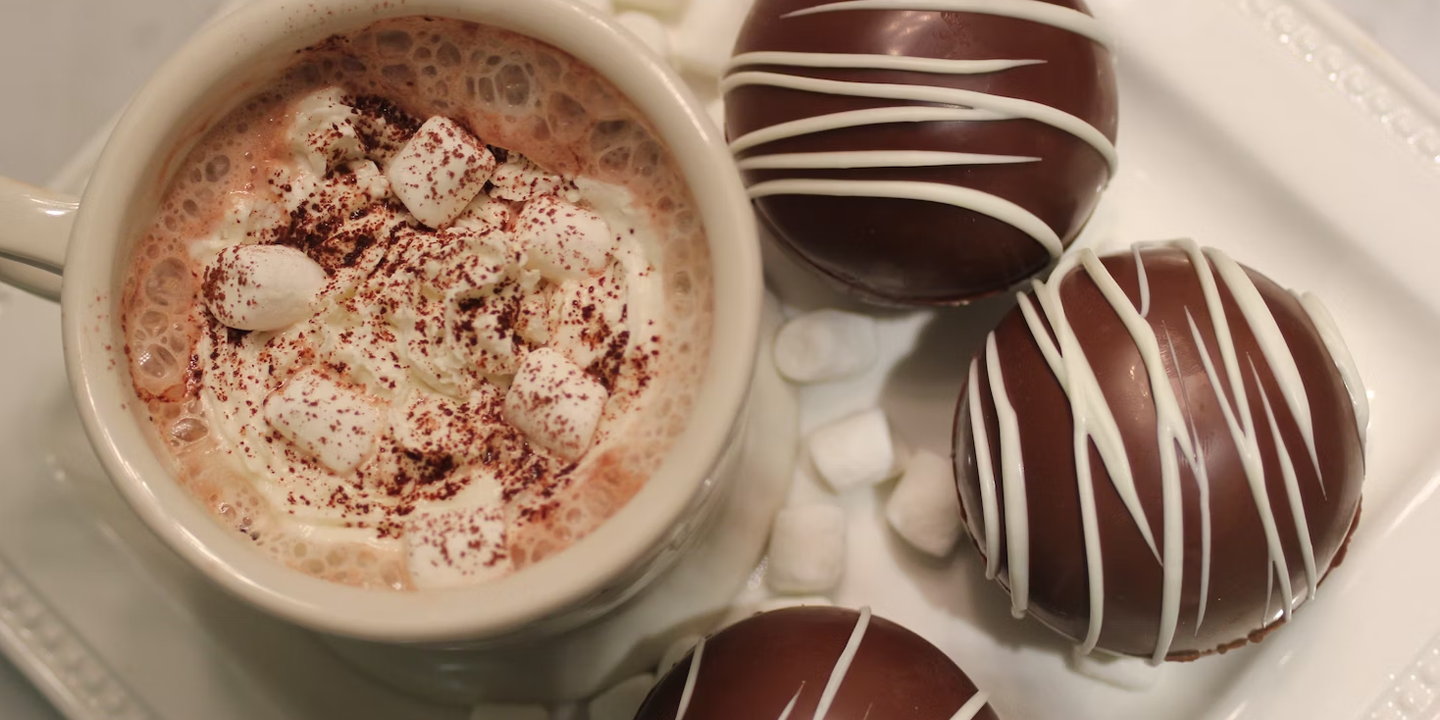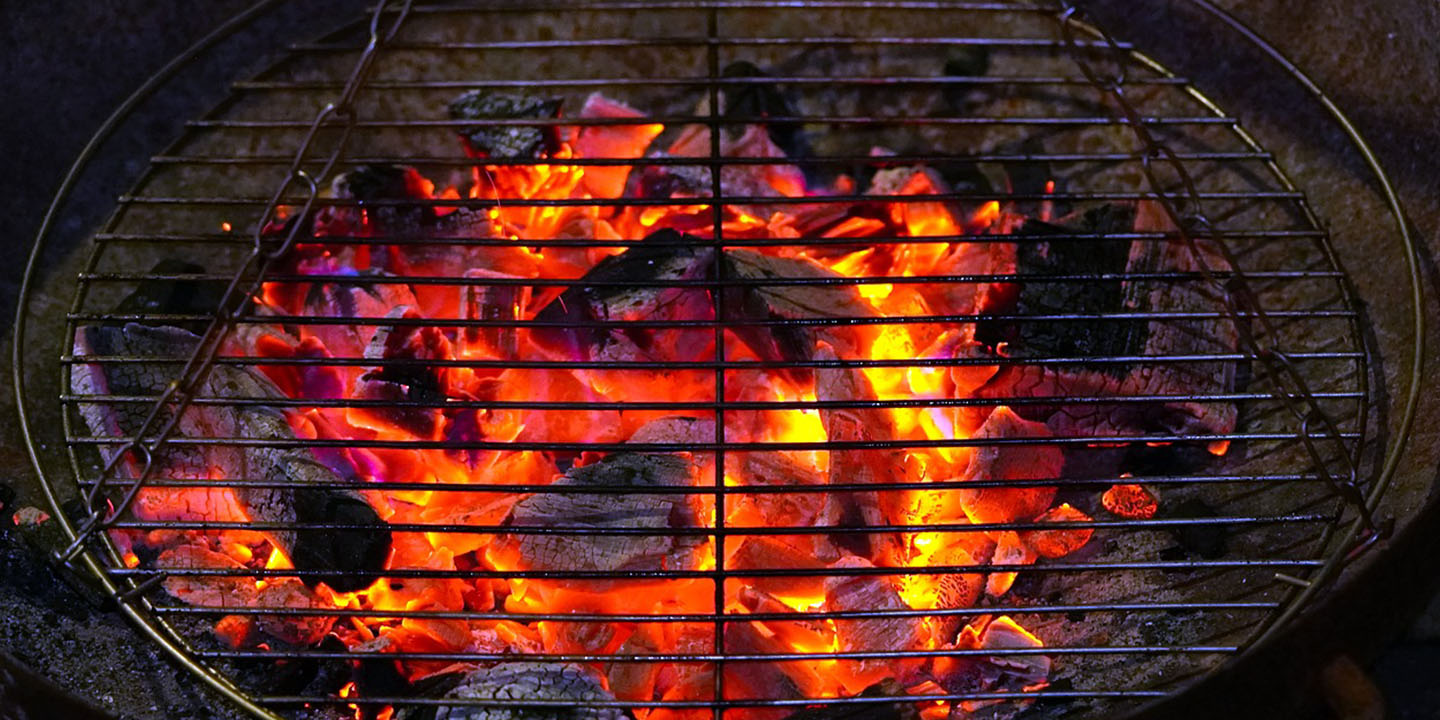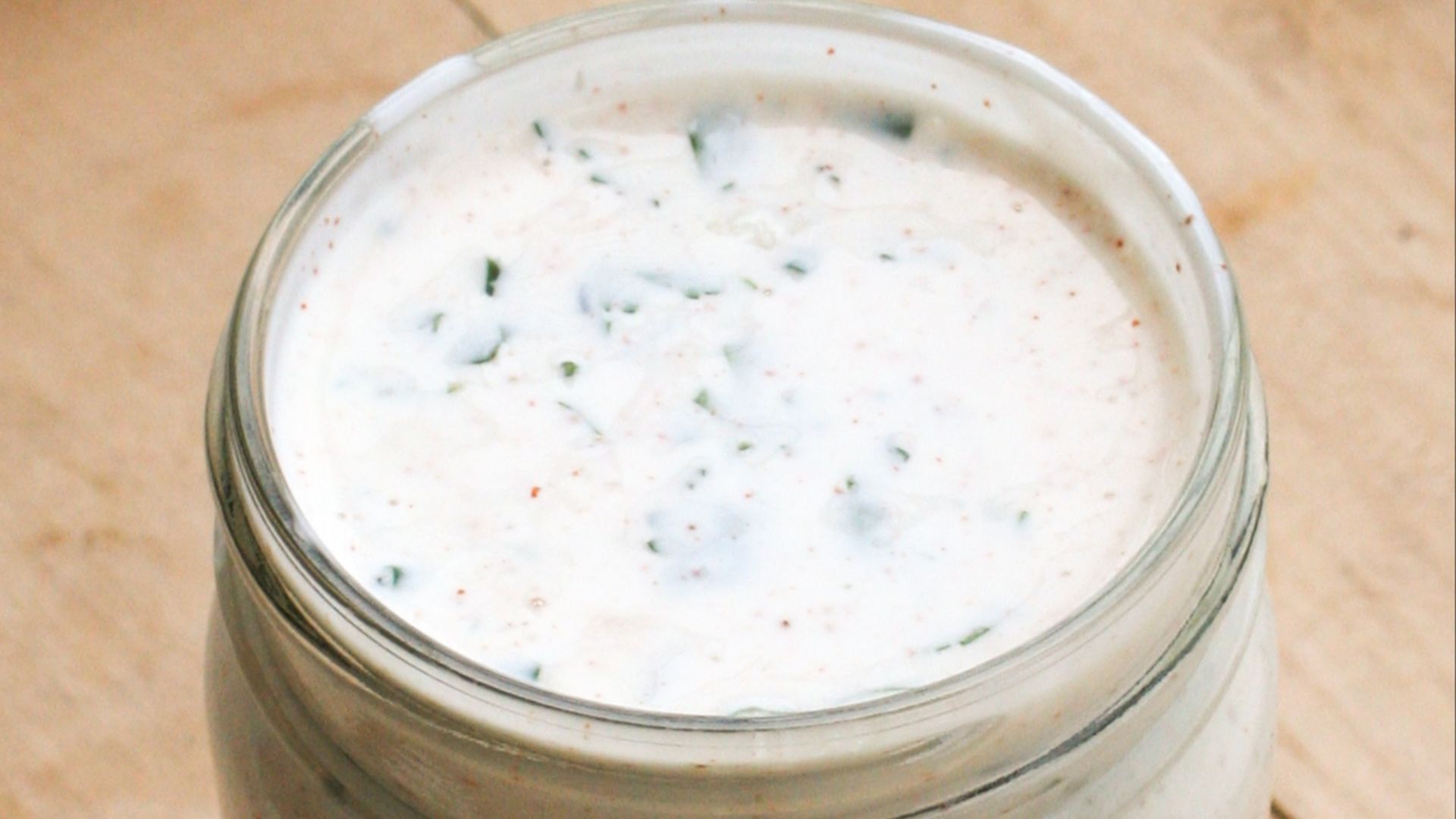 Whitney from Chicago, IL on Wikimedia
Whitney from Chicago, IL on Wikimedia
It’s easy to take ranch dressing for granted, not only its existence, but its contents. We don’t question where ranch came from, merely that it blossomed into existence one day to adorn our salads and chicken wings. The contents of ranch are similarly accepted. There’s buttermilk and seasoning in there somewhere, but we aren’t interested in figuring out the rest.
The origin story of ranch—where it came from and what’s in it—might just surprise you. Let’s dive into the hidden history behind Hidden Valley.
Ranch was developed in one of the last places you would think of: Alaska.
The Origins Of Ranch
Steve Henson was a native of Thayer, Nebraska, a village of less than 100 people. In the early 1950s, Henson relocated to a similarly harsh and remote outpost, Anchorage. Henson worked as a plumber and sometimes-cook for a crew of hungry contractors.
Fresh herbs and dairy, as you can imagine, were not easy to come by in 1950s Anchorage. So, Henson improvised a dressing out of powdered ingredients. The original ranch included garlic and onion powder, powdered pepper, buttermilk, mayo, and dried herbs.
While the original recipe was presumably tasty enough to feed the crew, it only really took off when Henson returned to the mainland. In 1954, Henson retired and moved somewhere warmer. He and his wife bought a guest ranch in San Marcos Pass, California. They named it Hidden Valley.
The Hensons operated a steakhouse as part of their ranch, which is when business really began to take off. The favorite souvenir of guests was a bottle of Henson’s signature dressing. Far from a commercial enterprise, guests came home laden with mayonnaise jars full of it.
By 1957, you didn’t have to travel all the way to Hidden Valley to get a taste of the famous ranch. The dry ingredients meant that the dressing traveled beautifully. Henson started a mail-order subscription.
Ranch Mania
Now, families across America could enjoy what would become their favorite condiment. All they had to do was add their own buttermilk and mayonnaise. Every family made it differently.
Though Hidden Valley Ranch itself closed in the mid-1960s (though not for lack of business), Hidden Valley Ranch the condiment was more popular than ever. What was once a family recipe sold for 75¢ in the mail became a corporate enterprise. And so, Hidden Valley Ranch Food Products, Inc., was born.
Like a delicious tidal wave, ranch fever swept from the Southwest to the Midwest. There it became a staple of salad bars in the 1970s. Ranch’s popularity only grew when a shelf-stable version became available in 1983; now, you didn’t even have to mix your own buttermilk!
While ranch was an immediate success, it wasn’t yet the cultural phenomenon it would become. The herby, tangy taste was still relegated to salads. It would take the collaboration of the century to make ranch America’s favorite condiment.
America's Favorite Condiment
The introduction of Cool Ranch Doritos in 1986 proved to be a watershed moment. Dip and chip were combined into one beautiful bite that was creamy, crunchy, herby, and tangy. Rather than just being a limited edition flavor, the chips became one of Doritos’ most popular products ever.
From chips, ranch made the leap to other foodstuffs. It usurped blue cheese as the favorite dip for buffalo wings. Pizzerias began offering it as a side.
By 1992, ranch dethroned Italian dressing as America’s best-selling salad dressing. It has held onto that spot for over 30 years.
Today, the average American consumes ranch 15 times a week on salads, pizza, chips, wings, and everything in between. There’s a ranch-themed restaurant in St. Louis. The constitution may as well read “life, liberty, and the pursuit of ranch.”
Thank you, Steve Henson, for changing the fabric of society forever.
KEEP ON READING

20 Food-Related Art Projects



